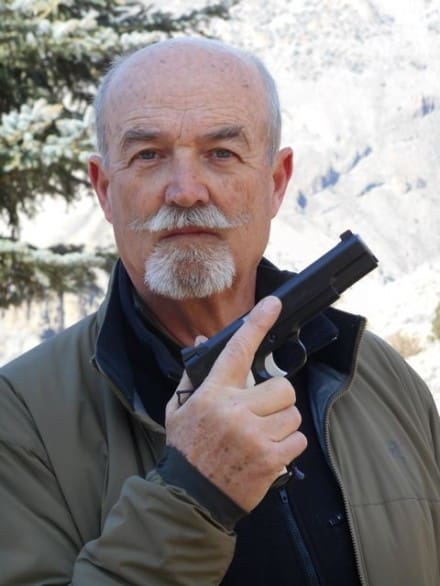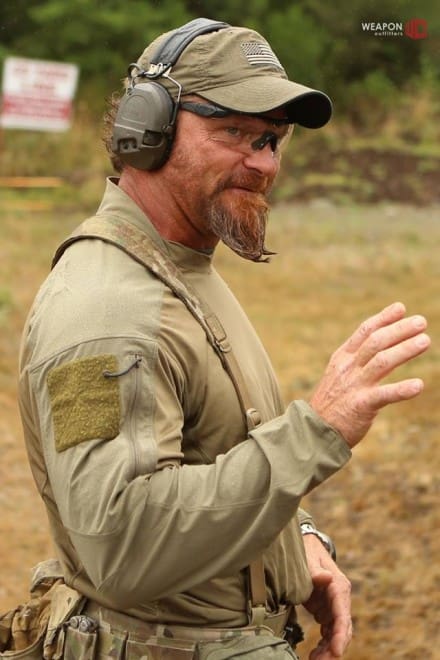Finger position is ‘King’
Everyone in the small arms training world pays homage to the concept of ‘gun safety’. Some of these gun safety rules are simple to follow, some are not. Visit any indoor shooting range or local gun club and within minutes of your arrival you will likely see someone violating a basic firearms safety rule. Everyone seems to place varying degrees of importance on gun safety. Some folks will tell you that there are tens rules of gun safety, other will quote five rules to follow. In the ‘Real World’ (defined as where the targets are shooting back and there are no firing lines) there are only two rules that matter: understand that the most critical gun safety rule is the mindset that ALL GUNS ARE ALWAYS LOADED. Once you understand this, the only other safety rules you must get clear are muzzle awareness and finger position.
Now, I’m going to say something that will make some folks heads explode; sometimes in the ‘Real World’ we point guns at other people. Often on purpose, and occasionally by accident. We try like hell to never point a firearm at a target we do not wish to engage, but guess what: shit happens. So, no matter how hard we try to avoid unintentional flags of people that we do not want to hurt, it is critical that one has a back up firearms safety system that prevents injury to friendly forces. Finger position or finger register is the key. It has to be programed into your firearms handling skills and never violated.
The best news is it is a very easy skill to master. Whenever you handle a firearm, never put your finger in the trigger guard unless you want to hear a loud noise. When on the range or practicing, program your brain that when your sights come off the target, your finger comes off the trigger and out of the trigger guard. It is really pretty simple. Once you start programing yourself to do this, it is pretty easy to adapt to. I suggest and teach that you place your trigger finger somewhere on the firearm where you can exert pressure against the frame or side of the weapon, so that in a startle response you will not end up on the trigger. On a pistol, I teach trying to place your index finger on or as near to the ejection port as possible. On a rifle/carbine put your finger on the stock above the trigger guard or receiver so that with pressure nothing will go ‘bang’ when you exert positive pressure. On the AR-15 platform take care to NOT put your finger on the magazine catch. I often recommend a small patch of skate board tape placed on the part of the firearm that you want to index with your trigger finger. When your finger becomes raw form the skate board tape, you can remove it as you will now understand where your trigger finger belongs.
Some folks tell me that it is better to engage the safety instead of worrying about finger position. WRONG. What if your sidearm does not have a manual safety? Recently, one of the other Alias instructors detailed his method of always engaging the safety (of an AR or AR control style) firearm for all things when not shooting even include reloading when empty and clearing a malfunction. Mike and Pat are professionals that I have the highest level of respect for. However, I do not teach, nor recommend engaging the safety for every task. Not all small arms have the controls located as ideally as the AR-15 platform, as many of the current popular sidearms don’t even have manual safeties and many that do can’t be engaged and still allow the small arm to cycle or load.
Remember, instructors don’t always agree on everything, but that doesn’t mean that Pat or Mike are wrong. We just don’t agree on this particular safety manipulation. I teach to utilize the safety when moving or when performing shoulder transitions, but when reloading an empty weapon or while clearing a malfunction, I’m not a fan of ‘safety on’. What I am really touchy about is finger out of the trigger guard and ‘in register position’; the way I instantly measure a new face with a firearm in their possession is whether they follow this rule. If you have to work with or be around folks with firearms, remember: the finger position rule is ‘King’ in gun safety.
-Ken Hackathorn

Ken Hackathorn has served as a US Army Special Forces Small Arms Instructor, Gunsite Instructor, and NRA Police Firearms Instructor. He is currently an FBI Certified Firearms Instructor, Certified Deputy Sheriff with Washington County SO, Ohio, and a SRT member and Special Response Team trainer. Ken has trained US Military Special Operations forces, Marine FAST and SOTG units and is a contract small arms trainer to FBI SWAT and HRT.
Ken has provided training to Federal, State, and local law enforcement agencies and been active in small arms training for the past 25 years. He has written firearms related material for Guns & Ammo, Combat Handguns, Soldier Of Fortune, and currently American Handgunner and contributed to at least six other gun/shooting journals. Ken was also a founding member of IPSC and IDPA.
To see Ken’s Training Class Schedule visit aliastraining.com.
Gunfighter Moment is a weekly feature brought to you by Alias Training & Security Services. Each week Alias brings us a different Trainer and in turn they offer SSD readers hard earned words of wisdom.





























































































































